Consapevolezza armonica. A braid of musical thoughts. Practical ear training studies. Una treccia dei pensieri musicali. Esercitazioni pratiche di ear training. A cura di Angelica Celeghin. 2011, Padova, pp. 51, Armelin Musica
ROSLUND Consapevolezza armonica. Armelin
€18.00
L’ascolto musicale non è solo un piacevole passatempo: se sviluppato in modo consono diventa elemento funzionale alla nostra crescita di esecutori. Per far ciò in modo ottimale potremmo aver bisogno di ampliare le capacità uditive, tali che ci permettano poi di individuare gli elementi del discorso musicale: dobbiamo allenare l’orecchio, fare cioè, per dirla con termine universalmente noto, ear training. La brillante novità editoriale che Armelin Musica ci propone è il manuale Consapevolezza armonica-Harmonic awareness, autore Björn Roslund dell’ Accademia di Musica di Malmö, su progetto editoriale della curatrice Angelica Celeghin. Il lettore affronterà in modo stimolante e dilettevole l’affascinante percorso dei cinque elementi che formano – secondo la prospettiva dell’ Autore – “la treccia dei pensieri musicali”: Teoria, Memoria e punto focale, Orecchio interno, Valutazione del suono, Contesto musicale. “Nell’ascoltare la musica la tua percezione armonica sarà più precisa quando gli elementi lavoreranno insieme per creare una più robusta treccia del pensiero musicale. Una melodia non è solo una melodia: normalmente essa è parte di una struttura armonica e l’essere consapevoli della natura di accordi e progressioni accordali rende un musicista più consapevole.” Il manuale Consapevolezza armonica non è concepito a difficoltà progressiva, il che consentirà al lettore di muoversi in ordine alle proprie necessità. Vi sono esercizi che possono essere eseguiti da soli, altri con un compagno: uno è l’ “allenatore” e conduce con uno strumento, l’altro è il “giocatore”; lavorare insieme con un partner di ear training è molto utile, anche per l’ “allenatore” stesso. Alcuni di questi esercizi saranno svolti sulla base di brani acclusi nel cd allegato, estrapolati tanto dal repertorio classico – sinfonico e vocale – quanto originale di ispirazione jazz, pop e folcloristica. Con la pratica della Teoria musicale il lettore imparerà a muoversi con disinvoltura nell’ambito della nomenclatura: dalle sigle – le stesse usate a livello internazionale e nel linguaggio jazz – agli accordi, scale, conduzione della voce; il lavoro su Memoria e punto focale lo aiuterà a memorizzare, relazionare e riconoscere un singolo suono o accordo, rapportandolo con il resto dell’immagine sonora; lo sviluppo dell’ Orecchio interno è fondamentale per ogni musicista: il lettore imparerà a pensare mentalmente le note; nel capitolo Valutazione del suono lavorerà sul riconoscimento di un suono all’interno di una più articolata struttura armonica: i colori dei suoni e degli accordi cambiano quando cambiano le armonie; riconoscere e identificare accordi e sequenze armoniche in un Contesto musicale rientra nel quinto dei capitoli del manuale. Gli elementi della treccia sono una efficace rete di protezione anche nel condurre la melodia: con la consapevolezza della relazione tra melodia e armonie l’esecutore si sentirà certamente più sicuro. Il fascino del manuale Consapevolezza armonica, dalla simpatica veste grafica, sta anche nel fatto che qualunque sia il proprio grado di confidenza con la musica ognuno ne otterrà giovamento: studenti di musica alle prime armi; studenti già abili nel loro strumento e che si dedicano al repertorio classico, jazz o pop; insegnanti e docenti per i quali può essere conveniente arricchire la consueta didattica del solfeggio; e in via generale tutti quelli che desiderano godere del piacere di scoprire qualche segreto in più del potere dell’ armonia. Consapevolezza armonica trova impiego in svariati livelli di studi musicali: Conservatori, IMP, tanto quanto a scuole pubbliche e private di musica a diverso livello di educazione musicale. L’utilizzo del manuale Consapevolezza armonica farà scaturire nel lettore anche la capacità di essere a sua volta creatore di nuovi esercizi, nuove formule, nuovo materiale su cui lavorare e con cui divertirsi. Sarà di interesse segnalare inoltre che per chi non padroneggia perfettamente la lingua italiana Consapevolezza armonica è corredato anche del testo in inglese. Già presentato negli USA, Consapevolezza armonica sta riscuotendo un significativo successo presso le Facoltà di Musica. ====== Listening to music is not just an enjoyable pastime: if properly developed it becomes a functional element for our growth as performers. To do this at its best we need to expand the hearing ability, that would allow us to identify the elements of musical discourse: we would therefore require ear training as it is commonly referred to. The brilliant new editorial delivery by Armelin Music is the workbook Harmonic Awareness: the author is Björn Roslund of the Malmö Academy of Music, the editor is Angelica Celeghin also planner of the editorial project. The reader will face the journey into the five elements that form “the braid of musical thoughts” in a stimulating and amusing way: Music theory, Memory and focus, Inner hearing, Tone valuation, Musical context. “When listening to music, your harmonic perception will be more and more accurate when the threads work together to make a stronger braid of musical thoughts. A melody is not just a melody: usually it is a part of a harmonic structure. The more you have a good harmonic awareness the more profound you perform melodic lines and figurations, making you more aware as a musician.” There is no progression in difficulty in Harmonic awareness, so you can move around it in the order you like the more. Some exercises you can manage on your own, in others you need an ear-training partner: one of you is the “coach” and leads with an instrument, the other is the “player”; working together with an ear-training partner is very good and useful, even for the “coach”. Some of these exercises will be conducted on the basis of the accompanying songs in the CD enclosed, extracted both from the classical repertoire – symphonic and vocal – and an original jazz, pop and folk inspiration one. When practicing Music theory the reader will get the familiarity to define and identify what he hears: this might for example concern scales and intervals, triads and coloured chords, basic harmony and voice leading, and the system used is mainly to be found in pop, jazz etc; working on Memory and focus will help him to keep important notes in mind, to relate and associate to notes or chords in the melodic or harmonic surroundings; an important ability to have as a musician is to be able to imagine notes in your head also: the reader will thus learn to practice his Inner hearing; with the chapter Tone valuation the reader will work on the recognition of a sound in a more complex harmonic structure: chords and sounds colours will change when harmonies change; the fifth thread is about recognizing and identifying chords and harmonic sequences, cadences or chord progressions in a Musical context. The threads in the braid could also be regarded as forming a safety net to rely on when carrying a melody: the executor will certainly feel more safe if aware of the relationship between melody and harmony. The charming workbook Harmonic awareness, provided with an appealing graphical style, is that no matter which degree of familiarity with music the reader has, everyone will benefit from these exercises in a very stimulating and enjoyable way: young students early in their musical career, students already proficient in their instrument who devote themselves to classical, jazz or pop style, professors and teachers for their didactic, and all those who want to enjoy the pleasure of disclosing a few more secrets of the power of harmony. Harmonic awareness can be used within various levels of music education systems, both public and private. The use of the workbook Harmonic awareness will certainly inspire the reader to be creative himself in turn so as to find new ways and new material to work on and have fun with, and increase his harmonic understanding. Worthy to note is also the double English and Italian text provided in Harmonic awareness. The workbook Harmonic awareness has already been introduced in the U.S.A. with noteworthy success in many Music Faculties.
Solamente clienti che hanno effettuato l'accesso ed hanno acquistato questo prodotto possono lasciare una recensione.

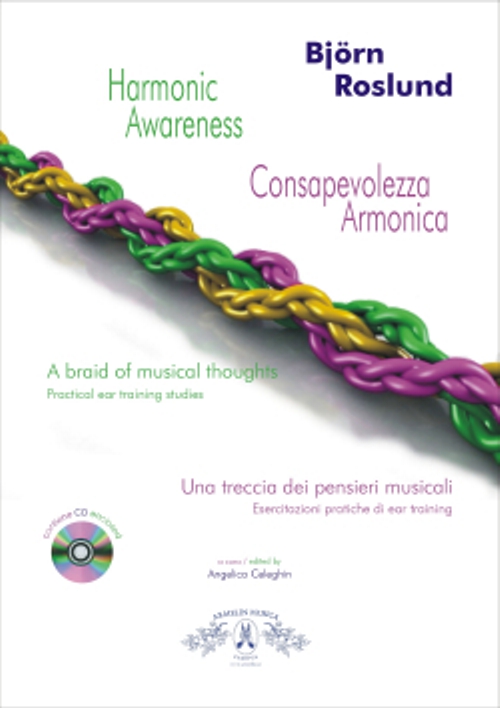
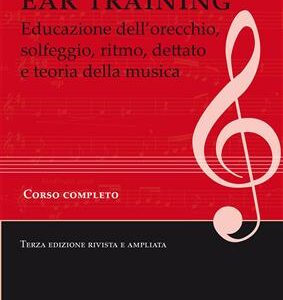
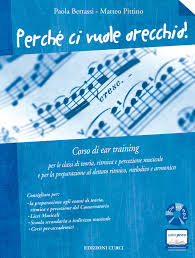
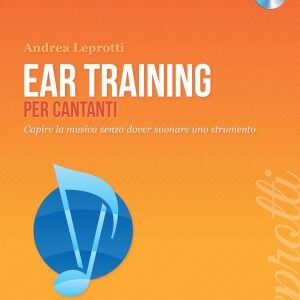
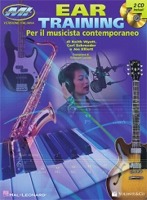


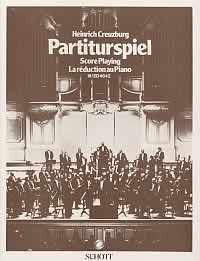






Recensioni
Ancora non ci sono recensioni.